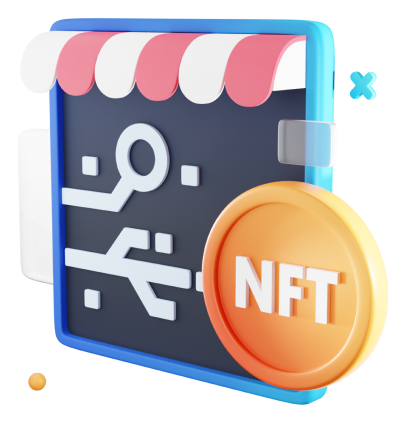Chapter 15: Where can I buy and
Hold NFTs?
Buying and
Holding NFTs:

Introduction: Non-Fungible Tokens (NFTs) have gained significant popularity in recent years as digital assets representing ownership of unique items, artworks, collectibles, and more. If you’re interested in buying and holding NFTs, this guide will walk you through the process and provide recommendations on where to start.

-
Understanding NFT Marketplaces:1
- NFTs are bought and sold on online marketplaces specifically designed for digital assets. These platforms provide a marketplace for creators to mint, list, and sell their NFTs, and for collectors to browse and purchase them.
- Popular NFT marketplaces include OpenSea, Rarible, Foundation, and Mintable. Each platform offers a unique user experience, selection of NFTs, and community engagement features.
-
Steps to Buy NFTs:2
- Create an Account: Sign up for an account on your chosen NFT marketplace. This usually requires providing an email address and creating a password.
- Connect a Wallet: NFT transactions are conducted using cryptocurrency, so you’ll need to connect a compatible cryptocurrency wallet to the marketplace. Popular wallets include MetaMask, Trust Wallet, and Coinbase Wallet.
- Browse NFTs: Explore the marketplace to discover NFTs that align with your interests and preferences. You can filter NFTs by category, price, creator, and more.
- Make a Purchase: Once you’ve found an NFT you want to buy, follow the instructions to complete the purchase using cryptocurrency from your connected wallet. Be sure to review the transaction details, including the price and any associated fees, before confirming the purchase.
-
Holding NFTs:3
- After purchasing an NFT, it will be stored in your cryptocurrency wallet associated with the marketplace where you made the purchase. Unlike physical collectibles, NFTs are stored digitally and can be accessed from any device with internet access.
- You can hold onto your NFT as a digital asset, displaying it in your wallet or showcasing it in virtual galleries and exhibitions. Some NFTs may also appreciate in value over time, making them potential investments.
-
Tips for Buying and Holding NFTs:4
- Do Your Research: Before buying an NFT, research the creator, the rarity of the item, and its potential value over time. Consider factors such as the creator’s reputation, the scarcity of similar NFTs, and the demand within the market.
- Diversify Your Portfolio: Just like traditional investments, diversifying your NFT portfolio can help mitigate risk and maximize potential returns. Explore different categories, artists, and styles to build a diverse collection.
- Stay Informed: Keep up with the latest trends, news, and developments in the NFT space to make informed decisions about buying and holding NFTs. Join online communities, follow NFT influencers, and participate in discussions to stay engaged with the market.
Conclusion: Buying and holding NFTs can be an exciting and rewarding experience, offering opportunities to own unique digital assets and participate in a growing ecosystem of creators and collectors. By following the steps outlined in this guide and staying informed about the NFT market, you can confidently navigate the world of NFTs and build a valuable collection of digital assets.

Non-Fungible Tokens (NFTs) have surged in popularity, revolutionizing the way digital assets are created.

Non-Fungible Tokens (NFTs) have surged in popularity, revolutionizing the digital art, collectibles.


